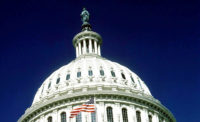As a young Marine, I drank the water at Camp Lejeune, North Carolina. Most people will have some understanding of what the first sentence means. Few people, however, will have an appreciation of the ripple effect this and similar “hero” actions to toxics may have on the practice of OHS.
Never Forget the Heroes
Never Forget the Heroes: James Zadroga, Ray Pfeifer, and Luis Alvarez Permanent Authorization of the September 11th Victim Compensation Fund (VCF) was signed into law on July 29, 2019. Never Forget the Heroes Act provides continuing support for the politically popular James Zadroga 9/11 Health and Compensation Act of 2011.
The intent of these Hero Acts, and supporting legislation, includes provisions for free comprehensive medical-care for 9/11 related illnesses along with funds set aside to provide tax-free awards for pain and suffering, lost earnings, and other compensable conditions. People eligible for compensation and other support provided by the Acts need only demonstrate they performed various activities e.g., first responder, recovery, or cleanup worker at specified locations, dates, and times.
PACT and CLJ Acts
Honoring our Promise to Address Comprehensive Toxics (PACT) Act and Camp Lejeune Justice Act (CLJA) were signed into law on August 10, 2022. The PACT Act expands and extends VA health care for Vietnam, Gulf War, and post-9/11 era veterans that may have “presumptive conditions” from exposure to chemicals found in burn pits, Agent Orange, and radiation. Presumptive conditions means that if the veteran was at a specified location for a specified time, then various cancers and other specified diseases the veteran may have, are presumed to have been acquired from the specified hazard.
Since passage of the CLJA, mass tort plaintiff lawyers are on a record-setting advertising pace and records for dollars spent to find tens-of-thousands of people, like me, who may qualify for an estimated $26 billion dollars in set aside compensation because we drank the water at Camp Lejeune for a minimum of 30 days total between August 1, 1953, and December 31, 1987, while the water was contaminated with perchloroethylene, trichloroethylene, vinyl chloride, benzene, and other chemicals.
If I am medically diagnosed with leukemia, aplastic anemia, cancer of the bladder, kidney, or liver, multiple myeloma, non-Hodgkin’s lymphoma, or Parkinson’s Disease before August 10, 2024, then the government will presume that I acquired one or more of these diseases because I drank the water at Camp Lejeune. Other diseases may qualify for compensation but must be demonstrated by causation arguments that are often extremely difficult to legally prove.
Firefighter heroes
If you put your life on the line to save people, such as a firefighter, you have earned the hero title. If you are or were a firefighter that used Aqueous Film-Forming Foam (AFFF) and have one or more of eleven specific types of cancer or other eleven specific diseases, such as asthma, then you’re eligible to join AFFF lawsuits. AFFF primarily used at military air bases contains PFASs, the “forever” chemicals.
Similar to Camp Lejeune lawsuits, plaintiff lawyers are conducting a massive advertising blitz to find plaintiffs for AFFF lawsuits. Thousands of plaintiffs have signed-up and many thousands more are expected to join the litigation.
Consider the financial allure to become an AFFF plaintiff. AFFF plaintiff lawyers are advertising that “top-tier” plaintiffs should expect settlements between $200,000 and $500,000. Second-tier plaintiffs can expect settlements in the range of $150,000 to $300,000. The third and lower tiers should expect settlement amounts of $75,000 or less. Compensation goes beyond medical expenses and includes such things as pain and suffering, emotional distress, and loss of consortium.
More lawsuits
The current hero effect on toxic chemicals is unprecedented. Even during the heydays of asbestos litigation, advertising to find plaintiffs for toxic tort lawsuits has never reached this fever pitch. Public sympathy for anyone harmed by toxic chemicals is one thing. Public sympathy for toxic chemicals that may harm a hero is in a class by itself. Be alert for the next toxic chemical to harm a hero. Litigation will likely follow.
Special interests
Organizations with special interests may take advantage of the hero effect of toxic chemicals. For example, this past March 2023 the Journal of Parkinson’s Disease published the article, Trichloroethylene: An Invisible Cause of Parkinson’s Disease? The article was written by a dozen authors with impressive MD/PhD credentials. The article included 90 references to demonstrate the thoroughness of the scientific review on the topic.
Contained within the article was six illustrative cases of people who developed Parkinson’s Disease and were exposed to TCE. Two of the people that developed PD drank the water at Camp Lejeune. Another three people with PD were military veterans. Was it coincidence that five of the six illustrative cases in the article had a “hero” connection? I believe that the article played the veteran sympathy card to motivate readers to support article recommendations for greater control of TCE exposure. This is not a criticism, however, but an observation.
Presumptions
Two important concepts in the fields of epidemiology, toxicology, and occupational health is that association is not causation and dose makes the poison. The hero effect with toxic chemicals, however, seems to set aside these scientific principles.
If I develop Parkinson’s Disease before August 10, 2024, because I am in the litigation cue, the government will presume that I acquired the PD simply because I drank the water while serving as a Marine at Camp Lejeune. As a CIH®, however, I cannot make this presumption. For example, I have conducted air monitoring for TCE many times in my career. Do I side with the article in the Journal of Parkinson’s Disease that my possible development of PD may have been caused by my TCE exposure during air sampling? It is scientifically ludicrous to presume these things.
Extremely complex
The High-Risk Occupational Disease Notification and Prevention Act was introduced into the U.S. Congress in 1986. The proposed Act touches on many of the complexities introduced by this hero article. While the High-Risk Act never passed, at least two books were written to explain the complexities of why it was not passed.
I leave it to you to determine what the main complexities involve and how these complexities with ripple effects may impact your OHS activities. As a starting point, why are most firefighters today joining the National Firefighter Registry. The NFR was developed in response to the Firefighter Cancer Registry Act of 2018. What other occupations deserve a registry to track chemical exposures? The deeper you look, the more complex the topic becomes.




